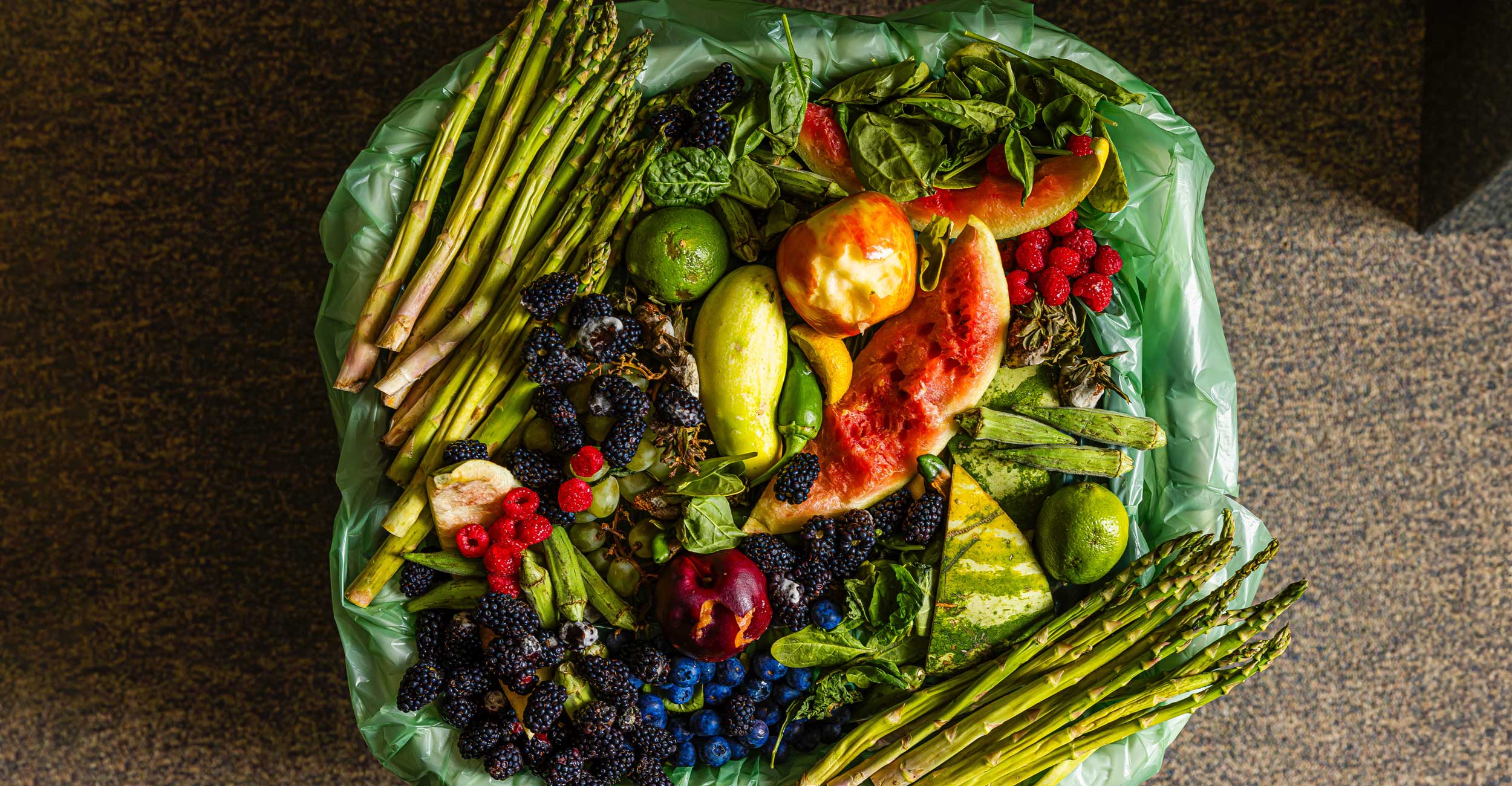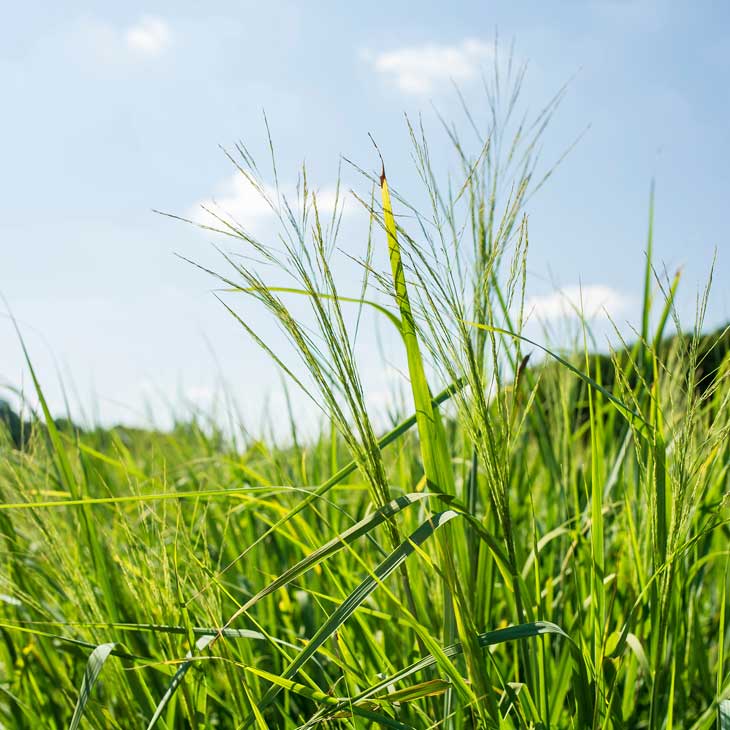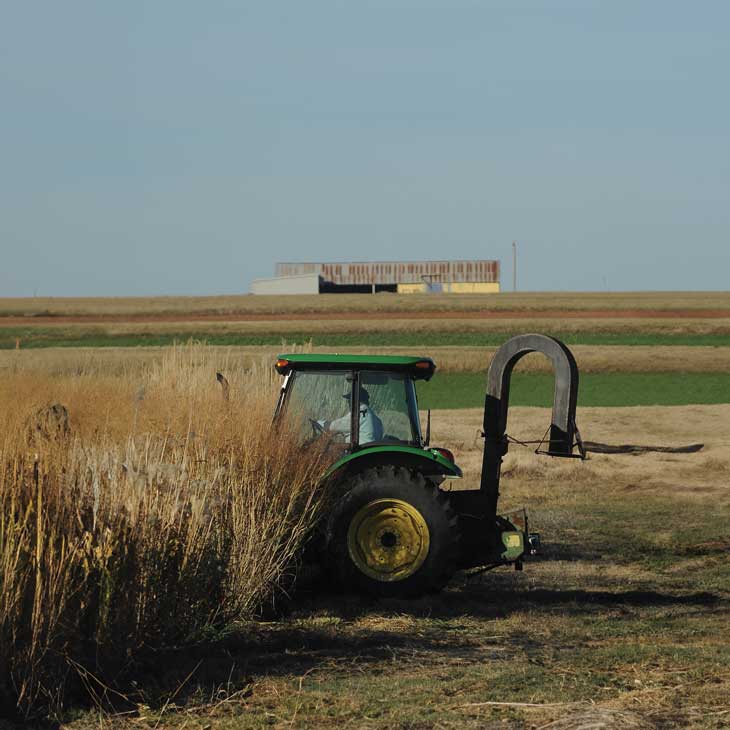
What's Waste Worth?: OSU aiding in creating of biomass economy
Tuesday, October 8, 2024
Media Contact: Sydney Trainor | Communications and Media Relations Specialist | 405-744-9782 | sydney.trainor@okstate.edu
Have you ever asked yourself what happens to food waste?
Uneaten food in the United States is managed through donations, upcycling, composting, anaerobic digestion or landfilling, all of which produce greenhouse gas emissions. In fact, the U.S. is the largest contributor to food waste globally with around 120 billion pounds of food wasted each year. That’s $218 billion worth of food.
So, what can be done to fix this problem?
Oklahoma State University has an answer.
OSU is doing its part to prevent waste by studying the biomass potential of crops and forests residues. From reporting on the importance of bioenergy to fueling the American bioeconomy, OSU’s roots run deep in biomass production.
Biomass includes organic material from crop residue, agriculture and food waste, forest residue, trees and dedicated energy crops, and it is used to make sustainable fuel, fibers, electricity, construction materials, plastics and more. The materials created from biomass are what make up the bioeconomy.
In March, the U.S. Department of Agriculture announced its plans to boost biomass supply chain resiliency to increase economic opportunities for farmers and improve environmental sustainability. The U.S. Department of Energy intends to increase the use of renewable biomass for fuels, products and power to help achieve national energy and economic goals while reducing harmful emissions and not interfering with the food and animal feed industries.
“We estimate that converting switchgrass to jet fuel reduces the 100-year global warming impact by 44% per unit of jet fuel. Our method supports sustainability by reducing the carbon footprint and promoting a circular economy.”
Dr. Lixia Lambert, assistant professor in the OSU Department of Agricultural Economics, has teamed up with OSU alumni from the University of Tennessee for more than a decade to help prepare the U.S. Department of Energy Billion-Ton Report, released every five years. The document examines more than 60 resources for biomass production with agricultural land, forest land, waste and algae.
Released in March, the 2023 Billion-Ton Report indicates the agriculture industry has the potential to produce about 500-800 million tons of biomass annually. The current bioeconomy produces 340 million tons of biomass per year. The report highlights that 7% of cropland and 12% of pastureland could contribute to the biomass market through native plant growth. For example, switchgrass in Oklahoma could be used as a biomass crop.
Since 2015, Lambert and Dr. Burton English, institute professor in agricultural and resource economics at UT, have championed the creation of a modeling tool to analyze the potential of forest biomass resources in the U.S.
With their Forest Sustainable and Economic Analysis Model, researchers can calculate the amount of woodland biomass available based on economic, environmental and sustainability factors.
“Dr. Lambert’s expertise provides invaluable insights into the sustainable management of forest biomass resources, how much forest biomass is available, how the distribution of those resources would work and the potential impacts to ecosystems,” said Dr. Matthew Langholtz, the Billion-Ton Report’s principal investigator from Oak Ridge National Laboratory.
Lambert’s research showed that forestland produces about 200 million tons of biomass annually.
“The objective is to minimize harvesting costs while estimating how much woodland biomass can be harvested across the country,” Lambert said.
The next step is making the model available to the public so other researchers can utilize it.
OSU’s ties to the game-changing biomass report are strong. The OSU Eastern Research Station in Haskell conducted regional switchgrass field trials to contribute to the 2016 and 2023 reports’ economic model for determining the potential of biomass crops. The report’s modeling tool for estimating the biomass production potential of U.S. agriculture was created by Dr. Daryll Ray during his 20 years as a professor in the OSU Department of Agricultural Economics.
Several OSU alumni contributed to the report, including Langholtz, who graduated from the OSU forestry program in 1994. UT’s Dr. Daniel de la Torre Ugarte graduated from the OSU agricultural economics doctoral program in 1991 and helped improve the biomass production modeling tool.
Empowering environmental conservation
Switchgrass isn’t the only biomass crop with potential in Oklahoma.

Logan Ozment, a graduate student working with Drs. Lu Zhai and Bryan Murray, assistant professors in the OSU Department of Natural Resource Ecology and Management, is comparing how climate change and other environmental factors impact the growth of four woody biomass species: sweetgum, loblolly pine, sycamore and eastern cottonwood.
“In Oklahoma, the focus for biomass is often on switchgrass, but there are many other options, especially from the woody species,” Zhai said. “Woody biomass species have some advantages over grass species, such as their relatively high tolerance to environmental stress.”
Woody biomass has a longer growth cycle (multiple years to decades) than crop and grass biomass species, so researchers must consider long-term climate impacts. The OSU research team studied the responses of the four woody biofuel species to climate change. In addition, the team is comparing the different genotypes of sweetgum and their responses to environmental factors in various locations in Oklahoma and other parts of the south-central U.S.
“Through this research, we can inform landowners what species they should select and where they can set up a biofuel plantation based on impact,” Zhai said. “Another important educational factor is training students to measure and analyze the environmental impacts on the species.”
Building a bioeconomy
The U.S. has set a bioenergy goal to replace the 35 billion gallons of aviation fuels used annually with sustainable aviation fuels by 2050, and there is more than enough biomass capacity to meet that goal, according to the latest Billion-Ton Report.
Dr. Hasan Atiyeh, professor in the OSU Department of Biosystems and Agricultural Engineering, and Dr. Babu Fathepure, professor in the Department of Microbiology and Molecular Genetics in the College of Arts and Sciences, collaborated to develop technology that involves adding natural microorganisms into the fermentation process for creating butanol from biomass. OSU is obtaining a patent on the co-fermentation process.
The process combines sugar-fermenting and gas-fermenting bacteria while capturing carbon dioxide. With traditional fermentation methods, more than 50% of the carbon in sugars is lost, and hydrogen and/or carbon dioxide are wasted.
“It is currently not feasible to make butanol from sugars, molasses or corn with a biological method at a cost competitive with butanol from the petroleum industry,” Atiyeh said.
Plant biomass contains three chains of large molecules called polymers: cellulose, hemicellulose and lignin. Cellulose and hemicellulose are sugar polymers, but lignin is a polymer with a complex chemical makeup. Lignin chemically binds with cellulose and hemicellulose, preventing them from converting to the simple sugar molecules that ferment to create biofuels like butanol. This is why degrading the lignin is important in the production of biofuels. Degrading lignin is currently achieved by heating biomass at high temperatures or treating it with acid or alkali. These methods are expensive and create waste with strict disposal guidelines.
“Although microbial pretreatment of plant biomass is slow, it is environmentally safe and cost-effective,” Fathepure said. “My goal was to figure out how we remove the lignin from the process so the sugar polymers cellulose and hemicellulose can be turned into simple sugars using enzymes. Bacteria and fungi have been breaking down lignin in nature for eons, so it was a natural choice for our process.”

Using decaying biomass from streams, termite gut fluid and rumen fluid from cattle stomachs, Fathepure discovered certain bacteria with the right genes and enzymes for degrading lignin. His lab uses several bacteria and fungi to degrade the lignin in biomass materials before providing them to Atiyeh to turn into butanol.
Atiyeh’s co-fermentation process can be done in two reactors or one. In the two-reactor setup, a microorganism converts the simple sugars from plant materials into butanol in the first reactor. The hydrogen and CO2 produced in this process are then moved to the second reactor, where another microorganism uses them to create more butanol. In the one-reactor setup, both microorganisms are added simultaneously to use the sugar and the gas to create butanol.
Research is ongoing to improve the efficiency of the co-fermentation process as Atiyeh works with Ohio State University to genetically modify the microorganisms to improve their tolerance to harmful elements and to increase the speed of the gas-fermenting process.
“Our method can increase butanol yield by 20 to 25%, and if we add more renewable hydrogen to the process, we could potentially achieve zero CO2 emissions,” Atiyeh said. “We estimate that converting switchgrass to jet fuel reduces the 100-year global warming impact by 44% per unit of jet fuel. Our method supports sustainability by reducing the carbon footprint and promoting a circular economy.”
Building the research bridge
The research conducted by Atiyeh, Fathepure, Joshi and Zhai and the switchgrass field trials were supported by the South Central Region Sun Grant Program managed on the OSU campus in Stillwater.
It is one of only five Sun Grant centers working to advance the U.S. bioeconomy. The five centers use regional resources to research biobased alternatives and provide educational programs on America’s energy demands while offering economic opportunities for rural areas.
Since 2006, the South Central Sun Grant Center has awarded over $7.5 million in U.S. Department of Transportation funds and $2.8 million in USDA funds to land-grant universities in Arkansas, Colorado, Kansas, Louisiana, Missouri, New Mexico, Oklahoma and Texas.
“We work with the other four Sun Grant Centers to further establish a bio-based economy through our land-grant universities,” said Dr. Scott Senseman, associate vice president of OSU Ag Research and director of the south-central center. “Each Sun Grant Center uses its unique regional resources to meet the common goal of researching energy alternatives to meet domestic energy demands.”
Photos By: Ellie Piper and Mitchell Alcala
Story By: Alisa Boswell-Gore | Research Matters Magazine
